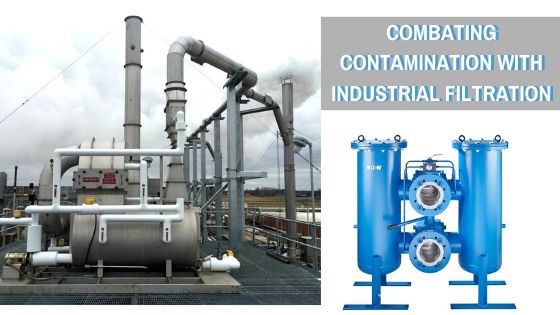In industry, there are many moving parts, numerous processes and large numbers of desired outcomes. For these, there is an equal number of materials that are used;they play a significant role in the transformation from start to end. One of the most common obstacles that are encountered is the need for purity and raw materials that are free from contaminants. These contaminants can have adverse effects on the industrial or mechanical processes being undertaken, which would, in turn, hamper the realisation of ideal outcomes. Industrial filtration, therefore, has become the primary tool used in the battling of contaminants.
Industrial filtration can be undertaken in very many different ways. Equally plentiful is the equipment that can carry out the task of decontamination. The equipment is mostly specialized and is designed to carry out specific tasks. In all, despite the varying designs, uses and tasks, equipment meant for industrial filtration often has one primary purpose in common: combating contamination.
When tackling contamination, you must take into consideration what tools would work best. This selection is mostly eased by the specialization of equipment and the specification of tasks that can be carried out. Examples of such equipment include:
- Centrifuges. Used mainly for separation using centrifugal force.
- Thickeners. These use the process of gravitational sedimentation to separate solids from fluids.
- Vacuums.
- Equipment for sedimentation.
- Gravity filtration equipment.
Contaminants also vary depending on the desired product after filtration has been carried out. In most cases, referencing industrial filtration refers to the separation of solids from liquids and gases. These solids can be regular dirt and grime that is collected during the harvesting or production of raw materials. They can also be a natural component of the raw material itself, but detrimental to its use in the long run, necessitating the separation. Finally, in some instances, these solids may not be contaminants at all and may be useful for use in other processes within the same area after they have been extracted.
Industrial filtration encompasses an action that varies in size and complexity. The way oil is filtered in various parts of an engine, no matter its size, and the treatment procedure used in water plants are both examples of industrial filtration despite their vast differences in form, function, size and end product. Just as these differences are highlighted in the methods, then their contaminants differ in both description and occurrence.
When contamination has been successfully eliminated or isolated, then the primary purposes for the processes will be achieved, and production and operation will carry on as ideally desired. These purposes include purification, resource management and conservation, damage prevention, the enhancement of efficiency, and many more. The cessation of the effectiveness of the filtration process can significantly hamper the achievement of goals while serving to illustrate the importance of the process itself.
If you need to undertake or to establish an industrial filtration system to combat contamination, contact an expert that can educate you in the assorted examples of industrial filtration media. They will also confer advice as to what would be the most likely to have the most satisfactory results based on your goals and outlooks.
Give your production practices the best chance at success by making sure that nothing is overlooked at any point from start to finish.
Read also:



